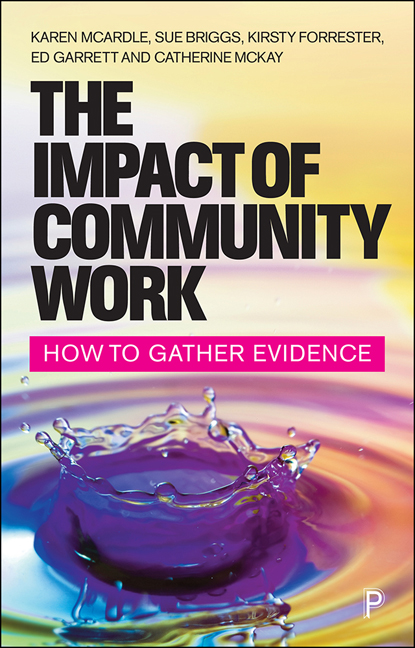1 - Impact, Evidence and Transformation
Published online by Cambridge University Press: 10 March 2021
Summary
Introduction: three case studies
This book aims to explain how you can implement the processes of gathering evidence of the impact of your practice in the community. We hope this book will work for you as a practical ‘how to’ guide, but the book also contains theoretical insights to practice and how these come together in the form of ‘praxis’. The term praxis refers to the way we make meaning from experience and theory, which in turn informs our practice (Stuart et al, 2015).
This chapter explores the idea of impact with work in the community and provides an introduction to the remainder of the book, which focuses on practical ideas and examples of methods of showing this impact. The book contains case studies to show how our ideas work in the field. We hope the three case studies in this chapter are similar to work you undertake; we present them here to encourage you to start thinking about practice and hope that the questions we raise will prompt reflection about the change you make and the impact of such change. By the end of the book, you should have the answers to the questions prompted by the case studies. You may wish to try to answer these questions at the end of the individual case studies as you encounter them:
The population of Maryville is 800 and 80 people came to a meeting in the village hall to discuss the future of the village, as there were plans afoot to build another 60 houses on the edge of the village, some of which were earmarked for social housing. Using a series of questions and small group discussion, the economic, social, environmental and emotional pros and cons were discussed, led by the community worker. She helped to summarise the key point of view, which was that the houses should not be built, and helped the community to think about the best ways of communicating this to decision makers and how to gather the points of view of those who had not attended. The decision was taken by the local council to approve construction of the houses against the wishes of the community. Was this a good piece of community work and how would the community worker know?
- Type
- Chapter
- Information
- The Impact of Community WorkHow to Gather Evidence, pp. 9 - 28Publisher: Bristol University PressPrint publication year: 2020

